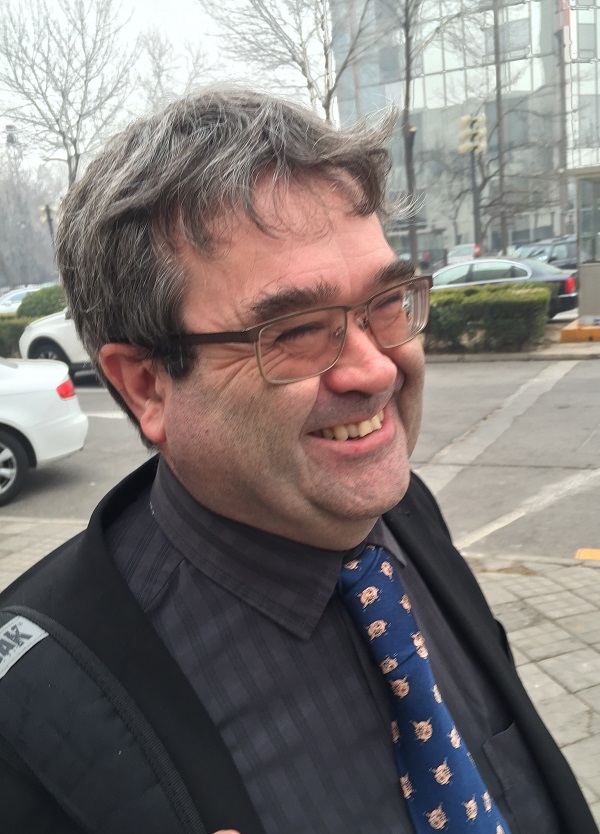For our column, Ask an Educator, we turn to educators, whether teachers, tutors, or principals, to answer frequently asked questions from parents. To send in your question, email jessicasuotmaa@beijing-kids.com.
This week, our question is:
“How is ‘learning and teaching’ different from ‘teaching and learning’?”
Answering for us Richard Woods, Western Co-principal of Yew Wah International Education School of Beijing, Yizhuang.

Goldsmith’s poem “The Village Schoolmaster” describes a person with whom many of us may be familiar:
‘Twas certain he could write, and cipher too:
Lands he could measure, terms and tides presage,
And e’en the story ran that he could gauge.
In arguing too, the parson own’d his skill,
For e’en though vanquish’d he could argue still;
While words of learned length and thund’ring sound
Amazed the gazing rustics rang’d around;
And still they gaz’d and still the wonder grew,
That one small head could carry all he knew.
The image of the teacher as the learned repository of all knowledge and wisdom has a long history. Wise, old, fearsome and yet kind: the pedagogue dispenses knowledge to children who may not be eager to learn, yet who cannot help but be mesmerized by the brilliance of the person in front of them.
And yet…
And yet…
Today, the world has moved on. Children and parents are less likely to be impressed by the learning of someone who, as I have just done, can easily recall a piece of writing simply by drawing on their memory and putting what they recall into a search engine.
Knowledge today, from the words of 18th century poets to how to split the atom, or how to create the perfect soufflé for that matter, is easily accessible to anyone with a rudimentary knowledge of the internet. If we don’t know when the First World War began, or who painted the Sistine Chapel, or who won the Nobel Prize for Physiology or Medicine in 2015, a moment spent on the internet will give us the answer.
So if information can be accessed so easily, what is the purpose of a teacher?
This question lies at the heart of what we as teachers do. I suspect most would agree that there are things that a child needs to know and understand, and be able to reproduce, in order to become functional in today’s world. Yet, even as we say that, we might not all agree on what those fundamentals might be. If the teacher, principal, or textbook, are making decisions about what individual children need to know, are they, and we, absolutely sure that the children are going to be prepared for the world into which they will shortly be moving into as adults? How many of us can remember facts or details that we had been told were essential for us to know at school, yet that have served no useful purpose to us in our lives since, and will unlikely ever become useful?
A differentiation between “teaching and learning” and “learning and teaching,” may at first appear to be somewhat recondite, but I suggest that getting these words in the correct order is not only important, but vital to our children’s future success. When teaching drives learning, a number of limitations are already imposed onto the individual child. For example, the teacher’s knowledge is necessarily limited by how much s/he knows. Even Goldsmith’s Village Schoolmaster did not know everything about everything, and his knowledge of the kind of work that 18th century English children were growing up to do was probably minimal. Moreover, surely no-one would argue that a textbook was designed specifically for the individual child reading it. A Language or Mathematics textbook includes much that is necessary for children to learn, but there is no reason for every child in a class to be presented with the same material at the same time in the same way. As knowledge and technology develop, a textbook is in danger of becoming obsolete even before it has arrived in a classroom.
However, when learning is the driving force, the teacher’s knowledge, or the content of the textbook, are available as and when the child needs them. The learning takes place within the child, as the child learns to discriminate between good and bad information, between facts that will help solve a problem and facts that, while may well be impressive, are irrelevant at that time to the child’s problem-solving processes.
The best teaching, therefore, encourages learning by developing creativity and deep thinking in children. It understands that the knowledge any teacher has acquired about a particular area or field may well be comprehensive, but is not absolute. It recognizes that learning is a process that requires support and encouragement, rather than simple direction. The teacher’s involvement is as a supporter, rather than as a controller of learning, enabling the child to understand the importance of what she is doing so she can use the materials at her disposal and create something that will have long lasting meaning for her.
Photo: courtesy of Richard Woods




